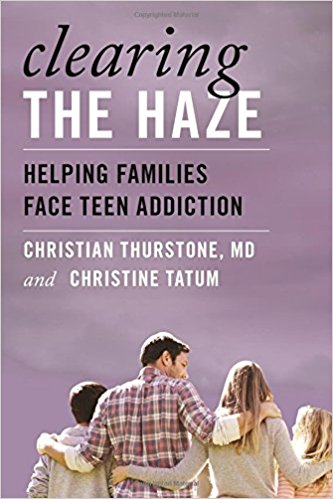The American Society of Addiction Medicine (ASAM) continues to oppose marijuana legalization and recommends that jurisdictions that already have sanctioned the sale of marijuana products prohibit those sales to anyone under age 25, according to its recently updated “Public Policy Statement on Marijuana, Cannabinoids and Legalization.”
From the statement, approved Sept. 21, 2015:
“In addition to the risk of developing addiction, several other harmful long-term effects of marijuana use on health have been documented, including adverse psychiatric effects from its use. Specifically, the long-term effects of marijuana use include altered brain development and cognitive impairment, including impaired neural connectivity in specific brain regions, decreased activity in prefrontal regions, and reduced volumes in the hippocampus.”
(Source: Volkow, N. D., Baler, R. D., Compton, W. M., & Weiss, S. R. B. Adverse health effects of marijuana use. The New England Journal of Medicine. 2014;370(23), 2219-27.)
“These effects have been found to be more profound in users who began marijuana use in adolescence or young adulthood.
(Sources:
Fergusson DM, Boden JM. Cannabis use and later life outcomes. Addiction. 2008;103:969-76.
Gruber, S.A., Sagar, K.A., Dahlgren, M.K., Racine, M,. & Lukas, S.E. Age of onset of marijuana use and executive function. Psychol Addict Behav. 2011;26(3):496-506. doi: 10.1037/a0026269)
Other studies have found a correlation between the use of cannabis and the appearance of psychotic symptoms and the prevalence of psychotic disorders. (Source: T.H. Moore, S. Zammit, A. Lingford-Hughes, T.R. Barnes, P.B. Jones, M. Burke, et al., Cannabis use and risk of psychotic or affective mental health outcomes: A systematic review. Lancet, 2007;370(9584):319–328
Moreover, even prenatal exposure to marijuana has been shown to be predictive of psychotic symptoms in young adulthood. (Source: Day, N. L., Goldschmidt, L., Day, R., Larkby, C., & Richardson, G. A. (2015). Prenatal marijuana exposure, age of marijuana initiation, and the development of psychotic symptoms in young adults. Psychological Medicine. 2015;45(8), 1779-1787.)
There is also evidence of a correlation between cannabis use and decreased academic performance, in addition to an increased likelihood of dropping out of school. (Source: Volkow, N. D., Baler, R. D., Compton, W. M., & Weiss, S. R. B. Adverse health effects of marijuana use. The New
England Journal of Medicine. 2014;370(23), 2219-27.)
A review of multiple studies found consistent associations between cannabis use and lower educational attainment. (Source: Macleod J, Oakes R, Copello A, et al. Psychological and social sequelae of cannabis and other illicit drug use by young people: a systematic review of generational, longitudinal studies. Lancet. 2004;363(9421):1579-1588.)
Another study found an association between cannabis use disorder and nonmedical use of prescription stimulants for studying, reduced class attendance and declining academic performance. (Source: Arria, A.M., Wilcox, H.C., Caldeira, K.M., et al. Dispelling the myth of “smart drugs”: Cannabis and alcohol use problems predict nonmedical use of prescription stimulants for studying. Addictive Behaviors. 2013;38:1643-1650.)
Along with lower educational attainment, research on employed individuals has found consistent associations between cannabis use and reduced workplace productivity. (Source: Lehman WE, Simpson DD. Employee substance abuse and on-the-job behaviors. J Appl Psychol.1992;77:309- 321.)
“Many of these studies await replication. However, collectively, these data are sufficient to suggest that children, pregnant women, and youth with still-developing brains should not use cannabis or cannabinoids due to a variety of neuropsychiatric health effects and impacts on cognitive functioning.”
The updated ASAM marijuana policy makes the following recommendations — with more explanation of each in its statement, which we invite you to read in its entirety:
1. ASAM supports the “decriminalization” of marijuana.
2. ASAM does not support the legalization of marijuana and recommends that jurisdictions that have not acted to legalize marijuana be most cautious and not adopt a policy of legalization until more can be learned from the “natural experiments” now underway in jurisdictions that have legalized marijuana.
3. ASAM recommends that jurisdictions that have already legalized marijuana or that may act to legalize it in the future implement the following public health and safety measures to minimize potential harms to vulnerable populations.
Among them is this one: “Prohibit the legal sale of marijuana products to anyone younger than 25 years of age.”
And this one: “Limit marijuana and marijuana product sales to state-operated outlets, akin to Alcohol Beverage Control regulations existing in several states and Canadian provinces, which preserve both public access and the potential for governmental revenues linked to sales, while limiting the broad commercialization of public sale of potentially harmful but brain- rewarding products.”
4. ASAM supports the use of cannabinoids and cannabis for medicinal purposes only when governed by appropriate safety and monitoring regulations, such as those established by the FDA research and post-marketing surveillance processes.


We welcome all thoughtful comments, but please abide by our commenting rules